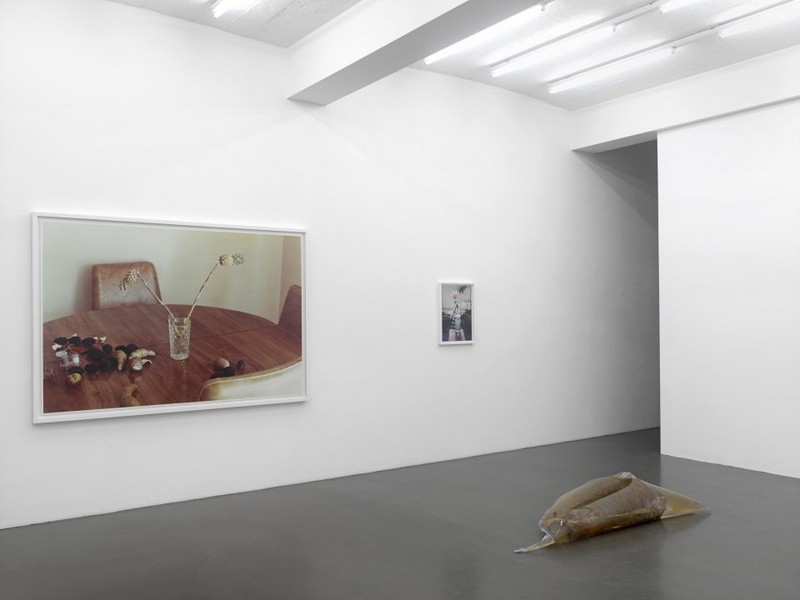Stranger than Paradise
06 Nov 2015 - 08 Jan 2016

Courtesy Privatsammlung; Croy Nielsen, Berlin
Photographer Achim Kukulies, Düsseldorf
Bas Jan Ader, Giovanni Anselmo, Keith Arnatt, Olga Balema, James Benning, Björn Braun, Vajiko Chachkhiani, Julian Charrière, Eli Cortiñas, Daniel Gustav Cramer, Owen Gump, Pierre Huyghe, Joan Jonas, Maria Loboda, Michael E. Smith, Wolfgang Tillmans, Julius von Bismarck and Tobias Zielony
6 November 2015 — 8 January 2016
Curated by Gesine Borcherdt
Nature is the oldest theme in art: whether it be cave paintings of buffalo herds, the Laocoön Group fighting the snake, the hortus conclusus in medieval representations of Virgin Mary or Giorgione’s looming Tempest, Flemish Still Life paintings, Manet’s idyllic Luncheon on the Grass, Caspar David Friedrich's Sea of Ice, Van Gogh's psychedelic Sunflowers, Max Ernst's surreal forests, the spiritual mountain sceneries of der Blaue Reiter, or Arte Povera’s energy objects and Land Art’s earth formations – the list is endless. Even in our high-tech times, which recently have been dubbed the era of anthropocene – the irreversible human footprint on earth – nature is indispensable.
Yet, the issue is by no means harmless. Already in early depictions of animals, flowers and clouds can be found a symbolic power of psychological or political significance. Representations of nature have always expressed an existential fear for life. They bear witness to impermanence, decay, threat, powerlessness, insecurity and strangeness. Even today, where one assumes that elemental forces can be kept virtually under control, nature turns bizarre, uncanny or demonic as soon as it is no longer mere backdrop or useful soil: beauty and threat merge. Films like Red Desert (Michelangelo Antonioni, 1964), Stalker (Andrei Tarkovsky, 1979), Fitzcarraldo (Werner Herzog, 1982) and Stranger than Paradise (Jim Jarmusch, 1984), as well as the short stories of JG Ballard from the 60s translate these thoughts into impressive fictions. They tell of landscapes dominated by man or those attempted to tame – but man is lost in the process.
The exhibition "Stranger than Paradise" takes up this idea. Nature, as it is understood in the works of the artists involved, varies here between irritation and comfort, perfection and destruction, order and loss of control. It is less about a revival of the parameters of romance, which is supported by similar dichotomies. Rather, in an atmospheric density individual artistic approaches are brought together, creating a mood - without an attempt at answers or at being exhaustive.
With: Bas Jan Ader (*1942 Winschoten (NL) -1975), Giovanni Anselmo (*1934 Borgofranco d’Ivrea (I)), Keith Arnatt (*1930 Oxford (UK) – 2008 Chepstow, Wales), James Benning (*1942 Milwaukee (USA), Olga Balema (*1984 Lviv (UKR)), Björn Braun (*1979 Berlin (D)), Vajiko Chachkhiani (*1985 Tbilisi (GEO)), Julian Charrière (*1987 Morges (CH)), Eli Cortiñas (*1975 Las Palmas (ES)), Daniel Gustav Cramer (*1975 Düsseldorf (D)), Owen Gump (*1980 Kentfield (USA)), Pierre Huyghe (* 1962 Paris (F)), Joan Jonas (*1936 New York (USA)), Maria Loboda (*1979 Krakau (PL)), Michael E. Smith (*1977 Detroit (USA)), Wolfgang Tillmans (*1968 Remscheid (D)), Julius von Bismarck (*1983 Breisach am Rhein (D)) and Tobias Zielony (*1973 Wuppertal (D)).
